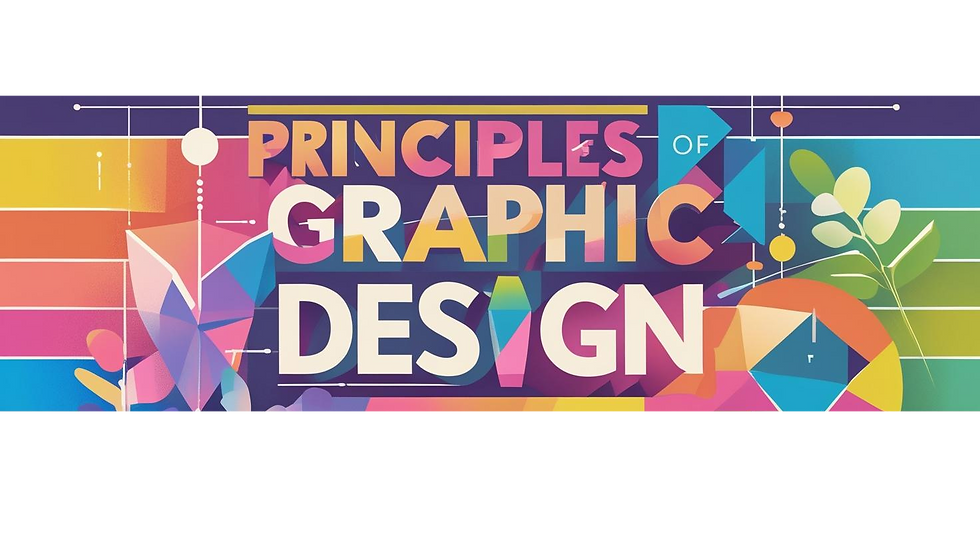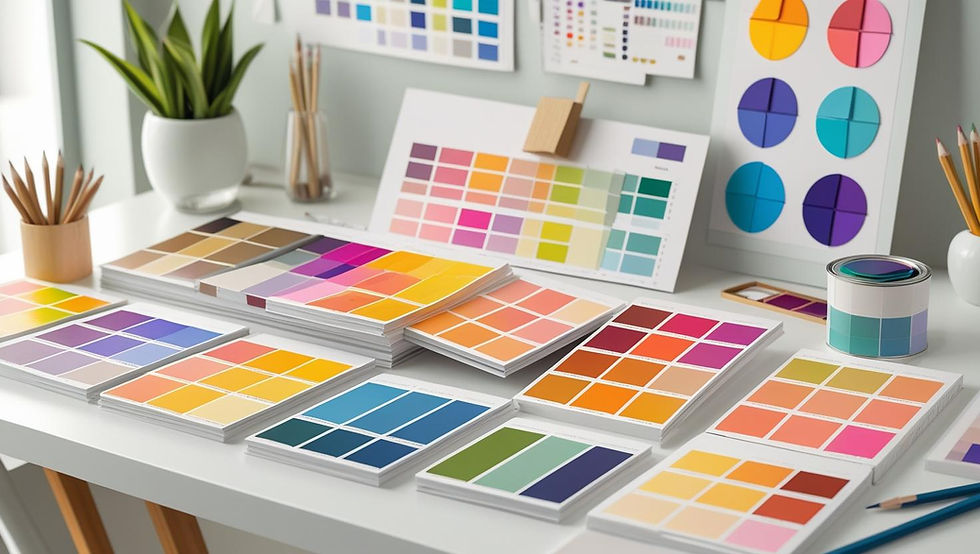Mastering Graphic Design Fundamentals: Key Principles and Elements for Impactful Projects
- Alexandra Ortasse
- Aug 1
- 4 min read
Graphic design is not just about creating pretty pictures; it's about communicating ideas visually. Whether you're an entrepreneur, a creative, or a marketer, grasping the key principles and elements of graphic design can enhance your projects and connect with your audience on a deeper level. In this post, we will explore these fundamentals and provide actionable tips to apply them in your work.
Understanding Graphic Design Principles
Balance
Balance is vital for creating stability in a design. There are two primary types: symmetrical and asymmetrical balance.
Symmetrical Balance: This involves mirroring elements on either side of a central axis. For instance, a well-known example is the Apple logo, where both halves are identical, providing harmony and stability.
Asymmetrical Balance: This type distributes visual weight unevenly, creating excitement and interest. For example, a large image balanced with smaller elements on the opposite side can create a dynamic effect.
Maintaining an even visual distribution holds the viewer's focus and keeps them engaged throughout the design.
Contrast
Contrast adds visual interest and helps important elements stand out. It can be created using color, size, and shape. Here are some effective contrast techniques:
Color: A bold red font on a white background grabs attention. A statistic shows that designs using contrasting colors can increase viewer engagement by up to 80%.
Size: Highlighting a title in a large font and using smaller text for descriptions directs focus effectively.
Good contrast not only enhances readability but also ensures that the viewer can navigate your work with ease.
Alignment
Alignment affects the overall structure and organization of a design. Proper alignment creates a visual connection among elements, making the layout feel cohesive.
You can align elements to the left, right, center, or justify them based on the message and aesthetic you want to communicate. Effective alignment guides the viewer's eyes, providing a clear flow of information.
Repetition
Repetition reinforces elements, creating unity across your design. This can involve consistently using colors, shapes, or fonts.
For example, using the same header font throughout a presentation reinforces brand identity and delivers a clear message. A well-recognized brand like Coca-Cola employs repetition in its use of color and logo, making its branding instantly recognizable.
Exploring the Elements of Graphic Design
Color
Color is one of the most emotional elements in graphic design. It sets the mood and can communicate messages without words. Understanding basic color theory is essential for crafting effective palettes.
Complementary Colors: Colors opposite each other on the color wheel, like blue and orange, create high energy.
Analogous Colors: Colors next to each other, such as blue, teal, and green, provide a sense of harmony.
Research indicates that the right color use can improve brand recognition by up to 80%.
Typography
Typography is the art of arranging text in a way that is both legible and visually striking. The right fonts set the tone and influence how your audience perceives your message.
When selecting typography, consider:
Font Styles: A combination of a bold serif font for headings and a clean sans-serif font for body text can create a professional look.
Hierarchy: Utilize size and weight in your text. For instance, using a larger, bolder font for the title followed by smaller sizes for subtitles and body text helps organize information clearly.
Well-executed typography enhances clarity and overall visual appeal.
Imagery
Images are essential in graphic design as they can capture attention and convey complex messages quickly. Whether using photographs, illustrations, or icons, choose imagery that aligns with your overall message.
Ensure that all images are high resolution and relevant. For instance, a fitness brand might use dynamic action shots to evoke energy, while a luxury brand might prefer elegant and serene images to convey sophistication.

Space
White space, or negative space, is the area around and between design elements. Its effective use can clarify information and give your design breathing room.
Strategically incorporating white space can highlight critical elements, making them more noticeable. Research indicates that designs with sufficient white space can increase comprehension by up to 20%, as they prevent viewer fatigue and confusion.
Practical Application of Graphic Design Principles
The principles of graphic design are invaluable, but putting them into practice is crucial. Here are a few tips to help you implement these concepts effectively:
Plan Your Layout: Start with sketches on paper or digital tools. This helps visualize balance, alignment, and space before your design goes digital.
Choose a Cohesive Color Palette: Utilize tools like Adobe Color to develop a harmonized color scheme that reflects your brand or project theme.
Select Appropriate Typography: Limit your choices to a couple of fonts to ensure consistency. For example, pairing a decorative serif with a clean sans-serif can establish a professional and clear hierarchy.
Utilize Templates: Design platforms like Canva offer templates that can serve as a foundation. Customize these templates while adhering to the design principles discussed to create unique, effective projects.
Feedback and Iteration: Share your designs with peers for constructive criticism. Iteration based on feedback is essential in refining your graphic design skills.
Final Thoughts
Mastering graphic design fundamentals is an ongoing, rewarding journey that combines creativity with practical skills. By understanding and applying principles like balance, contrast, alignment, repetition, alongside elements like color, typography, imagery, and space, you can create designs that truly resonate.
Whether designing for personal projects, professional presentations, or community events, integrating these concepts will make your creations not only visually appealing but also impactful. Keep in mind that effective graphic design is about communication. With practice and attentiveness to these principles, you can elevate your projects to outstanding levels.



Comments